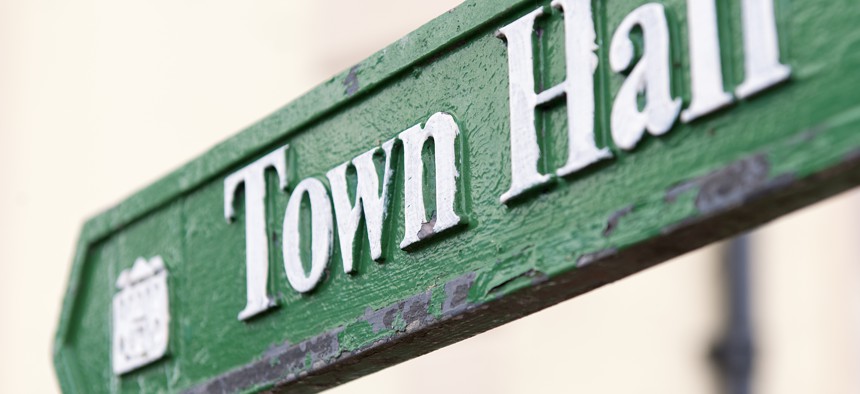How Cities are Tapping Federal Aid to Make Major Tech Upgrades

Getty Images/georgeclerk
Some of the spending is geared towards adding online access to services like building permits and dog licenses. Other investments focus on areas like remote meetings and cybersecurity.
Before the Covid-19 pandemic struck, you couldn’t pay a parking ticket remotely or order a development permit online from the city of Cheyenne, Wyoming.
"That’s how antiquated some of our systems were,'' said Renee Smith, the city’s grants manager.
Officials had for years talked about investing in technology, but those costly upgrades were always “that thing in the budget that got passed over from year to year,” winding up in the “‘maybe someday’ category,’’ she said.
For Cheyenne, someday is now. The city, like hundreds of other communities across the nation, is investing a portion of its federal pandemic relief money in technological improvements to make local government more accessible and efficient.
The $1.9 trillion American Rescue Plan Act, signed into law by President Biden last year, doles out $350 billion in direct aid to states, counties, tribal governments and municipalities. The money was intended to help communities rebound from the economic harm caused by the pandemic, though the rules governing the use of the funds, set by the U.S. Department of Treasury, are fairly broad.
With relatively few restrictions, state and local governments have used the cash to bolster local businesses, offset budget shortfalls brought on by the pandemic and pay for pet projects. Governments have until the end of 2026 to spend the money.
Upgrading online government services and access to remote meetings are part of a larger move to invest ARPA funds in technology.
For some localities, that means investing in broadband infrastructure at local schools and libraries; others are spending on hardware to allow city employees to work remotely. And some communities are using ARPA dollars to strengthen their ability to withstand cyberattacks.
In Clintonville, Wisconsin, officials are allocating ARPA funds to enhance their ability to provide remote access to government meetings.
In the early days of the pandemic, the town government in Clintonville, like local governments everywhere, shifted to virtual mode, broadcasting municipal meetings via Facebook Live. But officials soon learned the limits of the technology. Now the city is using a portion of its $438,000 allocation to upgrade its remote meeting technology.
Similarly, officials in Gary, Indiana are upgrading the historic city hall, adding better lighting and cameras to improve the broadcast quality of its meetings for viewers who cannot attend in person.
Some local officials say setting aside ARPA funds for computers, software and other equipment to make government more efficient and accessible is one of the best ways to use the historic infusion of federal money.
The town of Natick, Massachusetts had begun to transition to online systems for permits and licenses before the pandemic. But obtaining a dog license, birth certificate or building permit still required filling out a paper form, said town administrator James Errickson.
“We were still a pretty paper-heavy organization,’’ Errickson said.
The town is using a portion of its $10.3 million ARPA allocation to fund technology improvements so government services can be accessed remotely. “The pandemic really showed us how much we need to head in that direction from a public health perspective and an access to government perspective,’’ Errickson said. “It fast-forwarded all of our processes by at least 10 years.”
Natick has already set up a fully online system for obtaining building permits; it issues more than 5,000 annually. Soon, a system for obtaining dog licenses and vital records such as marriage licenses and death certificates will be available as well.
When the Covid crisis shut down most of the world in mid-March of 2020, many local governments were caught off-guard. “It was a big wake up call,” said Smith, the Cheyenne official. “It forced everybody to evaluate our day-to-day services and think about what we needed to invest in.’’
Within the next year, Cheyenne is planning to purchase and put in place a software system that provides budgeting, planning, citizen services, financials, and procurement functions. The technology “will greatly improve our capacity for transparency and efficiency – whether we are working remotely or providing in-person services,’’ Smith said.
The government isn’t Amazon and online government services will never fully replace in-person interactions, Smith added.
“Not everybody has access to technology,’’ she said. “Our offices are still here for people who prefer in-person.”
Daniela Altimari is a reporter for Route Fifty based in West Hartford, Connecticut.
NEXT STORY: Effective data sharing key to unwinding emergency COVID benefits





